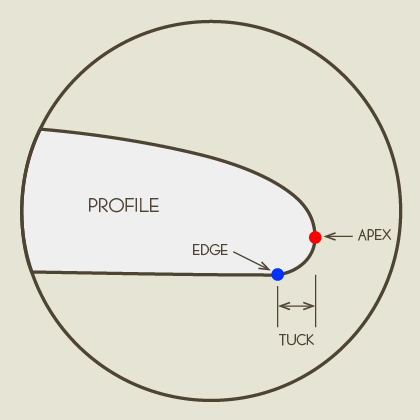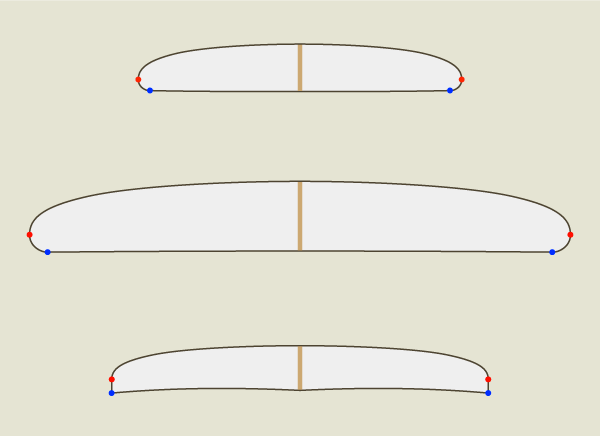
 |
NATURAL CURVES SURFBOARDS |
| Surfboards | | | Design | | | Surfing & Media | | | Surfcast | | | About NC | | | Custom Orders | | | Contact |
| |
TUNING and DETUNING RAILS |
| |
|
| |
October 10, 2018 Updated September 30, 2023 |
| |
|
| Rail are configured of their profile, their apex, the mid point in the rail profile between the top and bottom of the board, and their tuck and edge, the bottom corner of the rail where the rail profile meets the bottom of the board. All features of a surfboard's rails are integrated to create a rail that best suits the purpose of the board's design.> |
| |
|
| |
 |
| |
|
| |
Full Rail Profile |
| |
|
| |
 |
| |
|
| |
Rail Profile Zoomed in with Configuration Features |
| |
|
|
When designing boards for a variety of conditions we can vary the tuck and
edge of the rail from the apex of the rail and from wide point to tail to fine
tune generating acceleration, projection, speed, and maneuverability and
control, the primary performance features of a surfboard. The further we tuck
the rail into the bottom of the board the more the board will sit down in the
water and conversely, the less we tuck the rail into the bottom of the board
the more the board will sit on top of the water. The more a board and rails sit
down in the water the more control a surfer will have performing maneuvers in
critical waves and barrels. We refer to this as "detuning" the rails. The less
a board and rails sit down in the water the more acceleration, projection,
planning speed, and maneuverability a board will have in small or marginal
conditions. We refer to this as "tuning" the rails. Basically we detune rails
to promote control in critical waves and barrels and tune rails to promote
performance in small and marginal waves.
The length a hard edge or a machined edge carries from the tail towards the wide point has a similar affect to the tuck of the rail. The shorter this edge, where the edge blends to a soft tuck from the tail towards the wide point, the lower the board will sit in the water and the more control the board will offer the surfer performing maneuvers in solid waves and quality conditions. The further this edge carries towards the wide point the higher the board will sit on the water and the more acceleration, projection, and speed it will generate in small waves and marginal conditions. |
| |
|
| |

|
| |
|
| |
This image illustrates no tuck and maximum edge. |
| |
 |
| |
|
| |
This image illustrates notable tuck and minimum edge. |
| |
|
| |
The distance a rail is tucked from the apex of the rail and the distance a
rail has a hard edge from the tail towards the wide point determines how a
rail's performance varies. Less tuck and longer edge offer more release. More
tuck and shorter edge offer more control.
Ultimately, the tuck and edge of rails allows us to fine tune control and performance in all our designs maximizing performance features for waves and conditions. Boards for small waves and marginal conditions will benefit from less tuck and more edge. Boards for all around conditions will benefit from a reasonable blend of tuck and edge. Boards for critical waves, barrels, heavy water, and big waves will benefit from more tuck and less edge. LINK Rail Anatomy 2012 & 2023 |
| |
< top of page > |